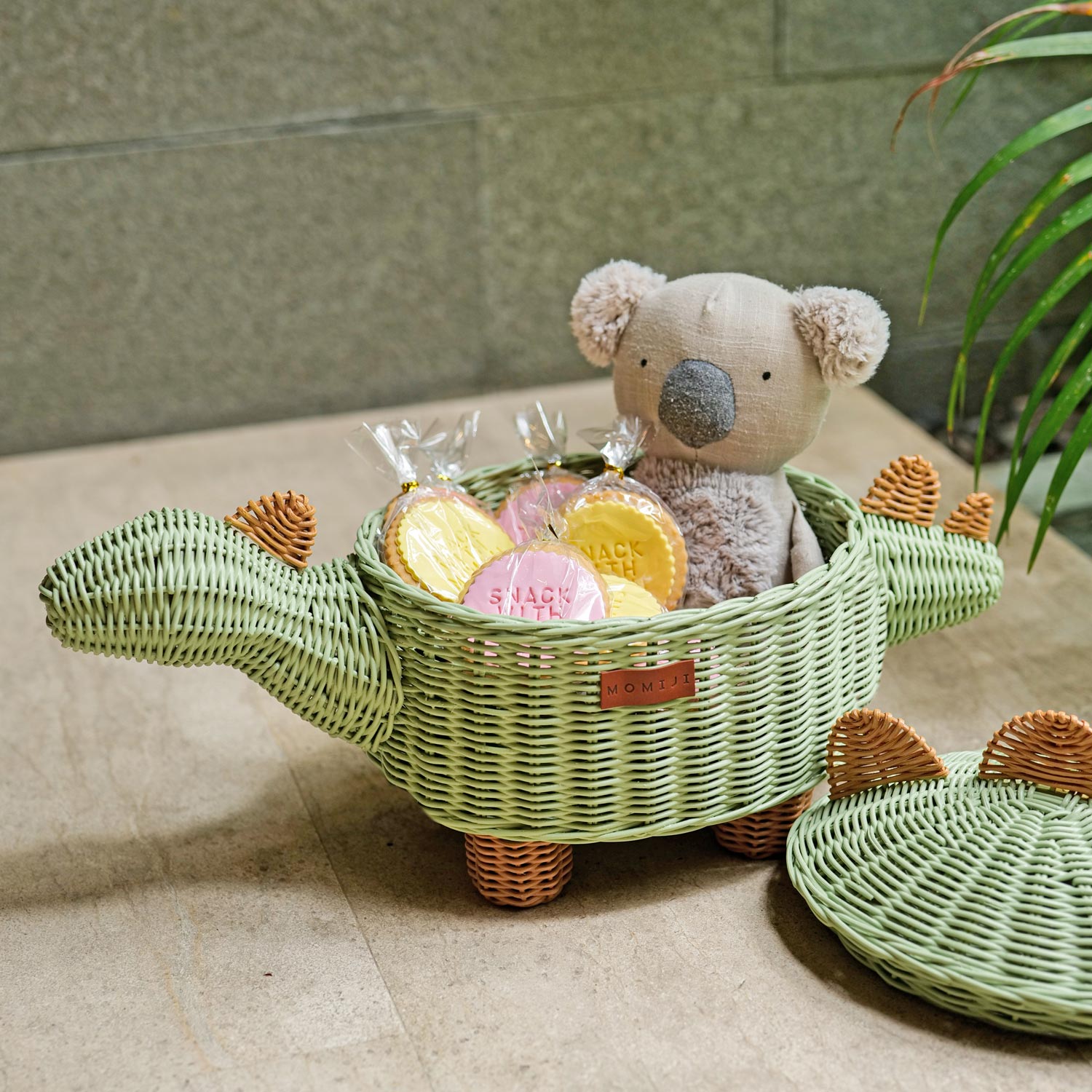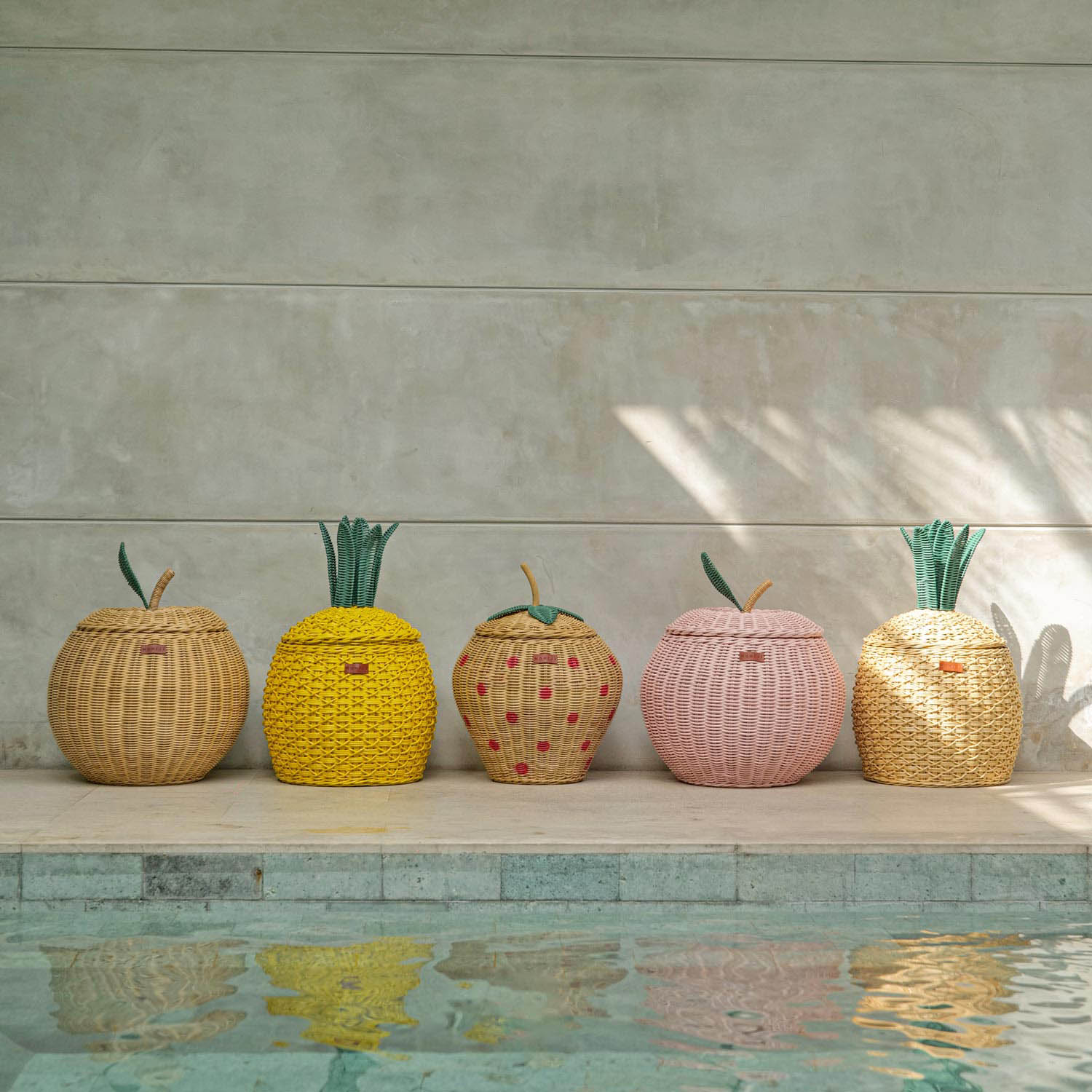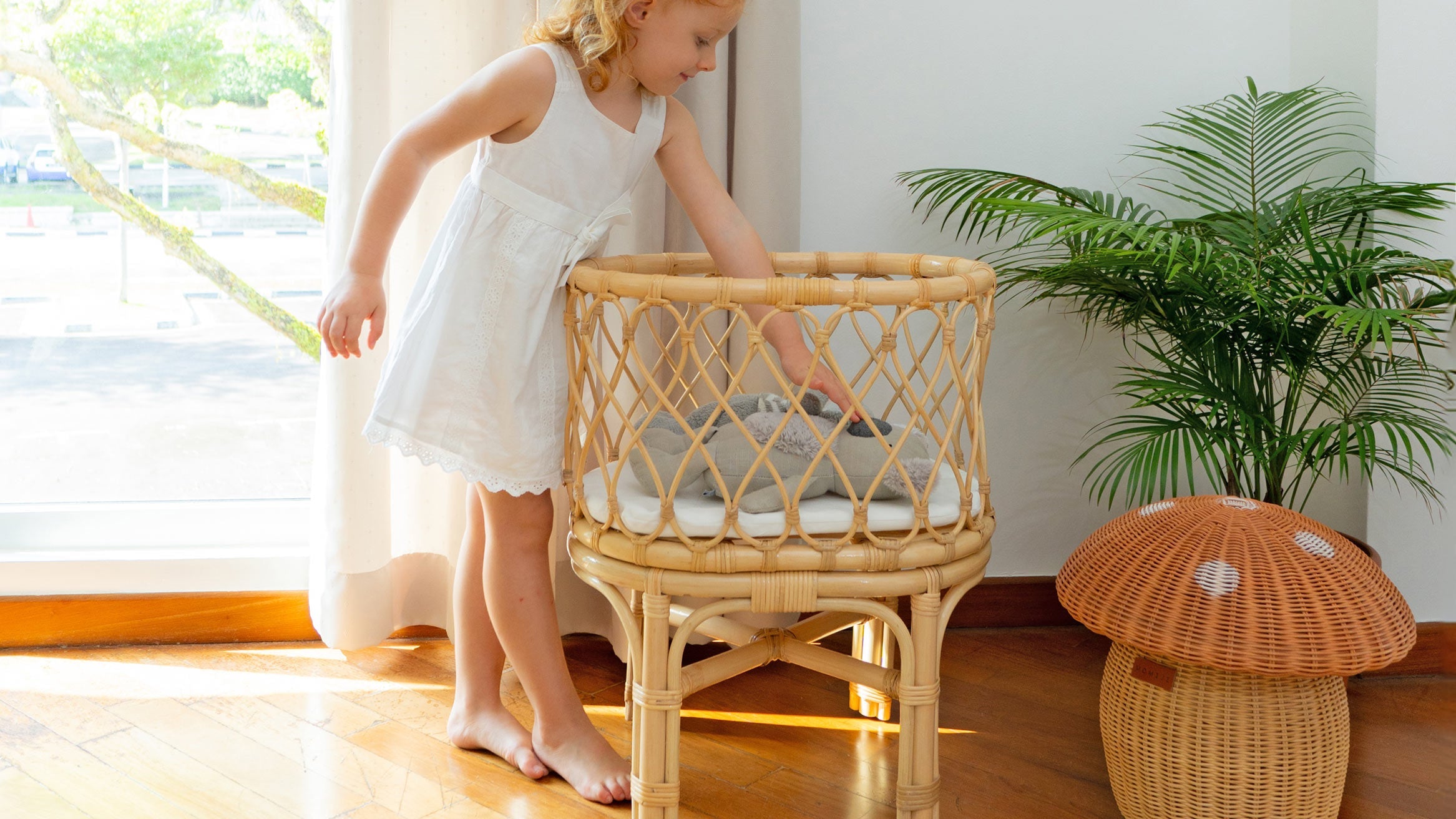
Rattan Storage Basket: The Secret to Clutter-Free Living with Style
There’s a moment, just after you’ve tucked the last book, toy, or throw into its rightful place, when your home exhales. The light shifts, a gentle stillness returns, and the chaos of the day melts into something softer. You pause, coffee in hand, and notice how calm feels visible, like sunlight quietly resting on woven texture.
That’s the spell of an ordered space, and it’s one most of us chase without realizing we can design it into our everyday life.
The truth is, tidiness and beauty aren’t opposites. They’re partners. When done right, storage isn’t about hiding the mess; it’s about shaping serenity. And few objects capture that better than the humble rattan storage basket, a piece that stores what you don’t want to see, while giving you something beautiful to look at.
A well-placed basket in natural weave feels like a breath of fresh air, it holds both purpose and poetry. The texture grounds a room; the design whispers restraint. And in a world of endless plastic and visual noise, it’s remarkable how something so simple can restore not just order, but also peace.
Reframing Storage as Design

Let’s be honest, storage rarely gets the spotlight it deserves. It’s the quiet understudy in the play of home design: necessary, functional, but often overlooked. Yet good designers know that storage is what makes a room work. And even better ones know it can also make a room feel.
The idea that storage must be invisible, shoved into drawers or closets, is fading fast. Modern interiors have embraced storage as part of the visual landscape, using it to add warmth, rhythm, and cohesion. And at the center of that shift is rattan.
Rattan bridges two worlds: the natural and the curated. Its honeyed tones complement any palette, from minimalist whites to moody charcoals. Its tactile texture softens angular lines and adds a whisper of imperfection that feels human. Unlike cold plastic bins, rattan brings character.
Designers now treat rattan baskets as both functional tools and aesthetic punctuation, little pauses that let a space breathe. Architectural Digest describes rattan as a remarkably versatile natural material that works across formal and casual spaces. It’s the rare accent that looks equally at home beside sleek Scandinavian furniture or rustic wooden floors.
To understand why rattan has become the design world’s most versatile natural material, read Rattan Basket: The Timeless Blend of Style, Function, and Nature, a deep dive into how craftsmanship, sustainability, and design converge in one timeless weave.
Rattan’s charm lies not in ornamentation, but intention. Each basket you introduce becomes both a container and a conversation piece, a soft sculpture of purpose. It’s storage that looks deliberate, feels tactile, and works tirelessly without drawing attention to itself.
The Psychology of Calm Spaces

There’s science behind that sigh of relief you feel when your home looks orderly. Clutter doesn’t just irritate the eyes—it taxes the mind.
Researchers at UCLA’s Center on Everyday Lives and Families discovered that women who described their homes as cluttered had consistently elevated cortisol levels, the body’s main stress hormone. In contrast, those who described their spaces as restorative and organized experienced significantly lower stress throughout the day.
According to Harvard Health Publishing, “a clean, organized space is a healthier, more soothing environment,” one that can help improve focus, sleep, and even relationships. When you think about it, that makes perfect sense, your surroundings constantly signal your brain. When they say “chaos,” you feel pressure. When they say “calm,” your mind finally quiets.
And that’s where materials matter. The feel of what surrounds us influences how we feel within it. According to Psychology Today, natural textures like wood, linen, and rattan provide subtle sensory grounding, what psychologists call “tactile reassurance.” Touching or even seeing organic materials can lower anxiety, because our brains associate them with nature, warmth, and safety.
When you run your fingers along a woven rattan basket, there’s a small pleasure in its imperfect texture, each strand slightly unique, each curve holding traces of human craftsmanship. It’s a sensory reminder that your space was shaped intentionally, not artificially.
It’s also why biophilic design, the philosophy of bringing nature indoors, has become so central to modern interiors. The natural irregularities of rattan mimic patterns we find in leaves or sand dunes, what scientists call “fractals.” These repeating organic shapes have been proven to reduce stress by up to 60%, according to Psychology Today.
In essence, the human eye and the human heart both crave what feels real.
When you fill your home with textures that invite touch and light that dances softly across them, you’re not decorating, you’re creating emotional balance. A rattan storage basket isn’t just storing things; it’s storing calm.
Design Principles for a Stylishly Organized Home

Style and order don’t need to fight. In fact, the most beautiful homes use storage as their secret design language. Think of your rattan baskets as punctuation marks in your interior story, pauses that help the eye rest, while keeping clutter in check.
1. Balance: Let Your Storage Belong
Your baskets should feel integrated, not accidental. Match their tone to your furniture or flooring to create visual flow. Pale rattan brightens minimalist spaces, while deeper honey or walnut shades warm cooler palettes. A balanced tone makes the basket look like part of the architecture—not a last-minute fix.
2. Repetition: Create a Rhythm of Texture
Great design thrives on rhythm. Repeating materials gives a sense of intention. Place similar rattan baskets across shelves, under consoles, or stacked by a wall to create unity. It’s the design equivalent of a musical refrain—a repeating note that ties the melody together.
3. Visibility: Curate What You Hide and What You Show
Not everything deserves to be seen. Use open baskets for attractive, easy-access items—rolled throws, favorite books, yoga mats. Opt for lidded baskets to conceal the less glamorous essentials: cords, toys, paperwork. The contrast between open and closed adds depth, balancing approachability with calm.
4. Scale: Play with Proportion
Size speaks volumes. A large rattan basket on the floor can anchor a room like a low piece of furniture, while smaller ones refine surfaces and shelves. Use big baskets as visual weights in airy rooms; use small ones for sculptural accents. Like all design, it’s about visual hierarchy—big pieces for grounding, small ones for rhythm.
5. Placement: Think of Function as Flow
Where does clutter tend to gather? That’s your cue. The corner of the sofa? Place a basket there. The pile near the front door? Give it a designated catch-all. Design begins when function meets foresight. By anticipating your mess, you build systems that make tidiness effortless.
When these principles align, organization stops feeling like labor and becomes art. The baskets disappear into the rhythm of the room, visible, yet quiet.
How to Use Rattan Storage Baskets in Every Space

A good rattan storage basket works like a chameleon, adaptable, stylish, and endlessly useful. Below are a few ways to make them indispensable across your home:
Living Room: The Soft Anchor
Your living room tells your home’s story, and it deserves a sense of calm continuity. Use a large round rattan basket to gather throws, magazines, or children’s toys. Its woven body softens the hard edges of furniture and electronics. Set it beside the sofa where sunlight can catch its pattern, it turns storage into sculpture.
Bedroom: Hidden Harmony
Bedrooms should soothe, not shout. Slide low rectangular rattan baskets under the bed for out-of-sight storage, perfect for off-season linens or shoes. On top, smaller baskets can corral accessories or bedtime reads on your nightstand. The subtle repetition of weave adds warmth without visual clutter. Every time you pull out a basket, you’re reminded: your order has texture.
Bathroom: Everyday Spa
Bathrooms crave warmth to counterbalance tile and glass. Stack rattan baskets by the tub for rolled towels or bath salts. Use a lidded hamper for laundry, it hides chaos while keeping the serenity intact. Add a small woven tray for skincare products on the counter. Instantly, your morning routine feels like self-care.
Entryway: First Impressions
The entry sets your home’s tone. Place a medium rattan basket beside the door for shoes, or use a flat one on a console for keys, mail, and dog leashes. Guests see intention, not clutter. According to Architectural Digest, interior designers increasingly use natural materials like wood, stone, and rattan in entryways “for their propensity to age well over time and allow the design to take on a story of its own.”
Office or Creative Corner: Mind Like Water
For your workspace, think containment with personality. Replace dull plastic folders with rattan file baskets. Their natural pattern breaks the monotony of screens and paperwork. Organization feels less corporate, more human. According to Psychology Today, exposure to natural patterns and textures has measurable calming and cognitive benefits.
Kids’ Play Area: Function Meets Fun
Children are natural creators of chaos. A few light, large rattan baskets can transform cleanup into a game. They’re safe, easy to move, and far prettier than plastic bins. Label each one subtly—books, blocks, toys—and let kids participate in returning order to their own little world.
Sustainability Meets Sensibility

Rattan’s appeal isn’t purely aesthetic; it’s ethical. It represents a rare union of design and environmental responsibility.
Unlike hardwood trees that take decades to mature, rattan regenerates within two to three years. It grows like a climbing vine, thriving under the forest canopy. This means that harvesting rattan encourages forest preservation rather than deforestation.
According to WWF, sustainably harvested rattan “provides income for rural communities while encouraging forest protection, since it grows best among standing trees.” In regions like Indonesia, Borneo, and the Philippines, ethical rattan cultivation helps reduce illegal logging while empowering local artisans.
Every handwoven basket tells a story that travels far beyond your living room. The artisan who weaves the strands often learned from parents and grandparents, carrying on generations of craft. When you buy authentic rattan pieces, you’re supporting this legacy.
From a sustainability standpoint, rattan wins on nearly every front, it’s biodegradable, low-waste, and incredibly durable. In a culture of disposable everything, it stands as a quiet rebellion: a product of patience and purpose.
Good design should be good for the planet.
A well-made rattan basket doesn’t just organize your home, it helps sustain someone else’s.
Style as a Habit, Not a Luxury

The most elegant homes aren’t the ones with the most stuff; they’re the ones where every object has meaning and place. Organization, in this sense, is less about control and more about care. It’s what turns a house into a sanctuary.
Making style habitual begins with these quiet design decisions. When you replace plastic storage with woven texture, you’re choosing slowness over speed, connection over convenience. Suddenly, putting things away feels satisfying. Each basket becomes part of your daily choreography: a hand reaching for calm.
It’s not about aesthetic perfection, it’s about emotional flow. Good design doesn’t demand you live neatly; it helps you live lightly. It meets you where life happens—in the piles, in the moments, in the small rituals of reclaiming order after chaos.
And that’s what Momiji understands deeply. If you’re ready to bring this quiet order home, explore Momiji’s collection of handcrafted rattan baskets, each one designed to store beautifully and age gracefully. They’re not just containers; they’re companions to the kind of life you’re building, intentional, balanced, quietly beautiful.
The Return to Calm

Night falls, and the day begins its retreat. The lights are dim, the rooms feel still, and your baskets—those woven keepers of order—stand silently in their corners. The same morning light that once sparkled on them now fades into a soft evening glow. You drop the day’s small clutter into their open arms: a magazine, a blanket, a few toys. In seconds, the house returns to rhythm.
That same peace you felt this morning—the one you thought fleeting—returns, full circle. The rattan storage basket hasn’t just stored your things; it’s stored your energy, your sanity, and your sense of home. It’s proof that design isn’t decoration—it’s daily therapy in tangible form.
As Harvard Health Publishing reminds us, our environment shapes our emotional well-being. Clean, organized surroundings lead to calmer minds and better moods. The beauty of rattan is that it bridges both worlds—the aesthetic and the emotional. It’s both beautiful and beneficial.
When storage looks this good, calm isn’t something you chase after cleaning—it’s what your home quietly gives you every day.
And as you turn off the lights, one last glimmer catches on the basket’s golden weave—a reminder that tranquility isn’t found in having less; it’s found in caring more for what you already have.
Final Word
To tidy is human; to design is divine. The rattan storage basket stands as a small act of both, a simple tool that transforms chaos into calm, not through force, but through grace.
Tomorrow, as the morning light returns and you slip another blanket or book into its woven folds, you’ll feel that quiet exhale again. The same story continues: style meeting function, design meeting peace.
In the end, your home doesn’t just hold your life, it reflects it. And when every corner speaks of balance and beauty, even the smallest basket becomes a lesson in how to live well.


